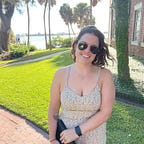Artificial Mangroves
Artificial reef installed along the seawall at Weston’s wannaB inn designed to promote and encourage oyster growth.
Up and down Florida’s beautiful west coast, mangrove trees and swamps create their owrı little ecosystems where marine life flourishes. And now Weston’s wannaB inn on Manasota Key has created its own unique mangrove ecosystem along the seawall surrounding the property of the resort.
If you roam across wannaB inn towards the Stump Pass entrance and head to the left to the docks, you will see its newest addition. Keith Van de Riet of Kansas University’s School of Architecture, formerly with Florida Atlantic University, in collaboration with Bobbie Marquis, wannaB inn’s general manager, installed cement artificial reefs along the sea wall surrounding the inn. The individual panels, created by Van de Riet, are 12-inches by 36-inches in size, with the top 6 inches staying well above the bay’s high tide line.
When Van de Riet and Marquis started talking, there was a desire to improve the grounds at wannaB inn by having a lower impact on the environment. WannaB inn staff really wanted the resort to have that positive image.
His initial thought was, “Can we build an artificial mangrove?”
Vari de Rict designed these panels with the intention of mimicking mangrove root structures, establishing an environment that promotes the restoration and growth of oysters and fish habitats. He then decided to partner up with Marquis and the wannaB inn.
“We consider ourselves to be an ecotourism destination. People come here to fish, kayak, to paddleboard; they come here to look for shells and shark teeth, Marquis said. “So because that is the kind of person that we attract and that’s what we are all about, this project fits perfectly because that population cares deeply about the environment.”
The panels resemble the many red mangrove forests that embed Manasota Key and other coastlines with brackish water and salt wetlands. With the mangrove-like engravings on the panels, there should hopefully be oyster growth in the months to follow.
The 18 feet of panels along the seawall is the first step of the project. Over the next few months, marine biology student Jessene Aquira-Thiomas, a PhD candidate at FAU, will be monitoring the Oyster growth on the panels. Van de Riel stated that the panels have already come a long way since his first thought of the project. He considers this just the beginning and sees this project as a prototype.
“I was very fortunate to have the opportunity to install it here as a pilot study, but really the goals of the warınabe inn and myself would be to improve the broader environment. This technology can be deployed almost anywhere. It could be modified to fit local ecosystem characteristics or a property owner’s desire for what they want their seawall to look like. So it’s got that design component that I think integrates that kind of urban edge,” Van de Riet said.
The first steps of any research project are expensive, but they had four very successful installation days down at the site on Manasota Key. They have a little bit of grant money left and hope to build a second version of it, hopefully in the spring.
“The installation was really interesting. There was a crew from the college [FAU] and it is a collaborative thing between architecture and marine biology. It was very engaging,” Marquis said.
Each panel is made from super high strength concrete of 15 PSI (pound per square inch) with added microfibers as well as Silica fume, which inhibits salt intrusion into the concrete. According to Van de Riet, even though the panels have delicate roots branching out, they should be sustainable. He made them very high strength to make them like a typical seawall.
The most interesting fact about the panels is that crushed oyster shells are embedded into the structures. This addition stimulates oyster growth and also tempers the PH of the concrete, making it more marine-friendly. Oysters go where other oysters go, so this should bring more action towards the new development.
“This project is all about keeping the bay clean. It’s about providing habitat. It’s about taking something that would otherwise be very flat and dead and turning it into something that is alive... So it is right up our alley for our values as a resort,” Marquis said.
The main sponsors on the project are Weston’s wannaB inn and The Curtis and Edith Munsori Foundation, with donations from CTS Cement and GCP Applied Technologies for the concrete used.
Additional participants in the project include Paul Mankiewicz of the Gala Institute, Tim Hall of Turrell, Hall and Associates, Ben Wolf of CTS Cement, Tom Cottir of Cottin’s Hardware and Rental, Nick Novelli, Blarica Martinez, lose Beltrarı, Pieter Conradie, lesene Aquind-Thomas and Suraiya Mynuma.
